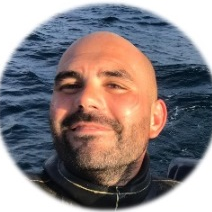Chemical Contamination on Coastal Ecosystems
A special issue of Journal of Marine Science and Engineering (ISSN 2077-1312). This special issue belongs to the section "Marine Ecology".
Deadline for manuscript submissions: closed (25 September 2023) | Viewed by 8258
Special Issue Editors
Interests: biodiversity and ecosystem functioning; environmental risk; aquaculture and fisheries; biotechnology and resources valorization
Special Issues, Collections and Topics in MDPI journals
Interests: aquaculture; bivalve molluscs diseases; welfare of farmed fish species; conservation of biodiversity in aquatic environments; (eco)toxicology in aquatic organisms; deep-sea species; alien invasive species
Special Issues, Collections and Topics in MDPI journals
Interests: aquaculture; fish biology; fish diseases; ecotoxicology; freshwater ecosystems; antibiotic resistance; trace elements; emerging contaminants; microplastics; deep-sea species; invasive alien species
Special Issues, Collections and Topics in MDPI journals
Special Issue Information
Dear Colleagues,
Coastal zones are formed by several complex, dynamic, and often sensitive ecosystems that interface between terrestrial and marine domains. With a few exceptions, these environments present high biodiversity and high productivity, lodge several unique habitats, and provide relevant ecological services as well as manifold goods to humans. The continuous growth of human populations, namely in coastal areas, has, however, caused coastal ecosystems in recent decades to be some of the most impacted environments by contamination and human pressures. Since 2000, the Water Framework Directive (WFD) has been the main law for water protection in Europe. It applies to inland, transitional, and coastal surface waters as well as groundwaters. Marine pollution is a persistent and cumulative environmental issue with profound impacts on coastal ecosystems. Consequently, contaminants of emerging concern (CECs), persistent organic pollutants (POPs), and potentially toxic elements (PTEs) enter the coastal environment and cause known or suspected adverse ecological and/or human health effects.
CECs are strictly defined as any synthetic or naturally occurring chemical that is not commonly monitored in the environment. It is important to point out that most CECs are not pollutants that are totally new or have just entered the environment. Rather, most CECs are well-established pollutants with a newly demonstrated toxic effect or mode of action. Similarly, other chemical contaminants, such as PTEs and POPs, can become bioavailable by remaining in the dissolved and suspended fractions of the water column, also posing risks to human health through the consumption of seafood products.
The exposure of organisms to toxic and dangerous substances (i.e., CECs, POPs, and PTEs) can produce several instances of damage and disturbance, ranging from molecular to organismal levels of organization, with impacts on their physiological functions, their behaviors, and, in the most severe cases, compromising their survival. The continued accumulation of these pollutants observed in some coastal ecosystems, such as estuaries and coastal lagoons, can, for instance, distress benthic populations, affecting community structures and, eventually, ecosystems’ properties as well as functions. Determining the ecological impacts of pollution in the biotic and abiotic components of coastal ecosystems is essential for developing mitigation measures, as well as restoring their ecological balance.
Papers submitted to this Special Issue should be original contributions dedicated to the occurrence, fate, and effects of PTEs, POPs, and CECs in coastal marine areas.
Dr. Sílvia C. Gonçalves
Dr. Giuseppe Esposito
Dr. Paolo Pastorino
Guest Editor
Manuscript Submission Information
Manuscripts should be submitted online at www.mdpi.com by registering and logging in to this website. Once you are registered, click here to go to the submission form. Manuscripts can be submitted until the deadline. All submissions that pass pre-check are peer-reviewed. Accepted papers will be published continuously in the journal (as soon as accepted) and will be listed together on the special issue website. Research articles, review articles as well as short communications are invited. For planned papers, a title and short abstract (about 100 words) can be sent to the Editorial Office for announcement on this website.
Submitted manuscripts should not have been published previously, nor be under consideration for publication elsewhere (except conference proceedings papers). All manuscripts are thoroughly refereed through a single-blind peer-review process. A guide for authors and other relevant information for submission of manuscripts is available on the Instructions for Authors page. Journal of Marine Science and Engineering is an international peer-reviewed open access monthly journal published by MDPI.
Please visit the Instructions for Authors page before submitting a manuscript. The Article Processing Charge (APC) for publication in this open access journal is 2600 CHF (Swiss Francs). Submitted papers should be well formatted and use good English. Authors may use MDPI's English editing service prior to publication or during author revisions.
Keywords
- contaminants of emerging concern
- persistent organic pollutants
- potentially toxic elements
- trace elements
- coastal ecosystems
- sediments, water and organisms
- bioindicators, biomonitors, ecotoxicology and biomarkers
- physiological, behavioural and ecological disturbances and responses
- ecosystem health status
- environmental quality and environmental indexes







